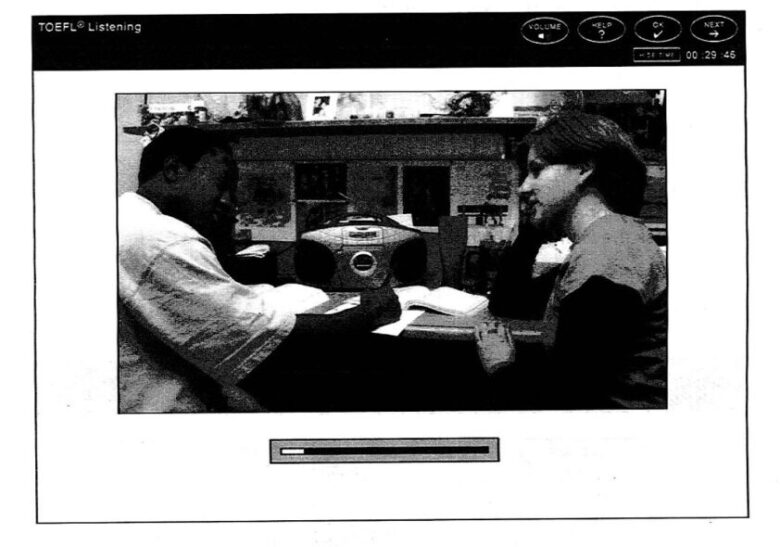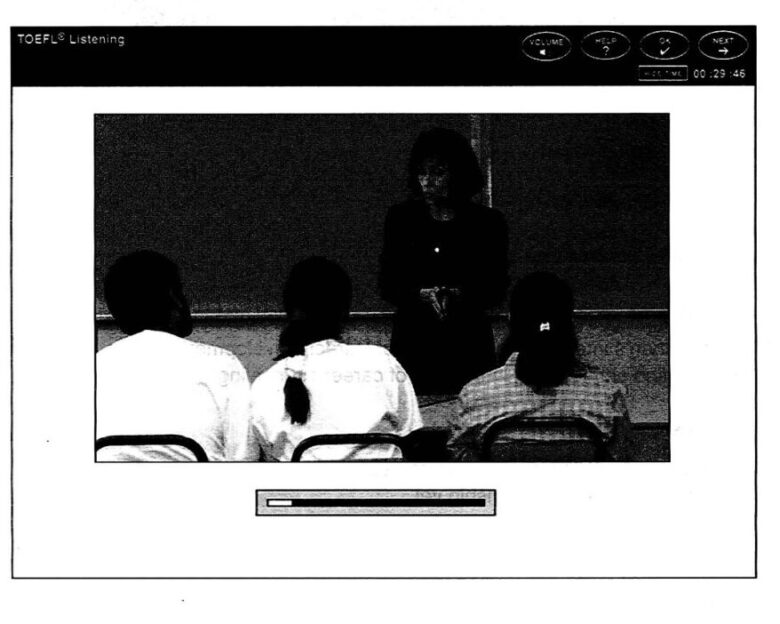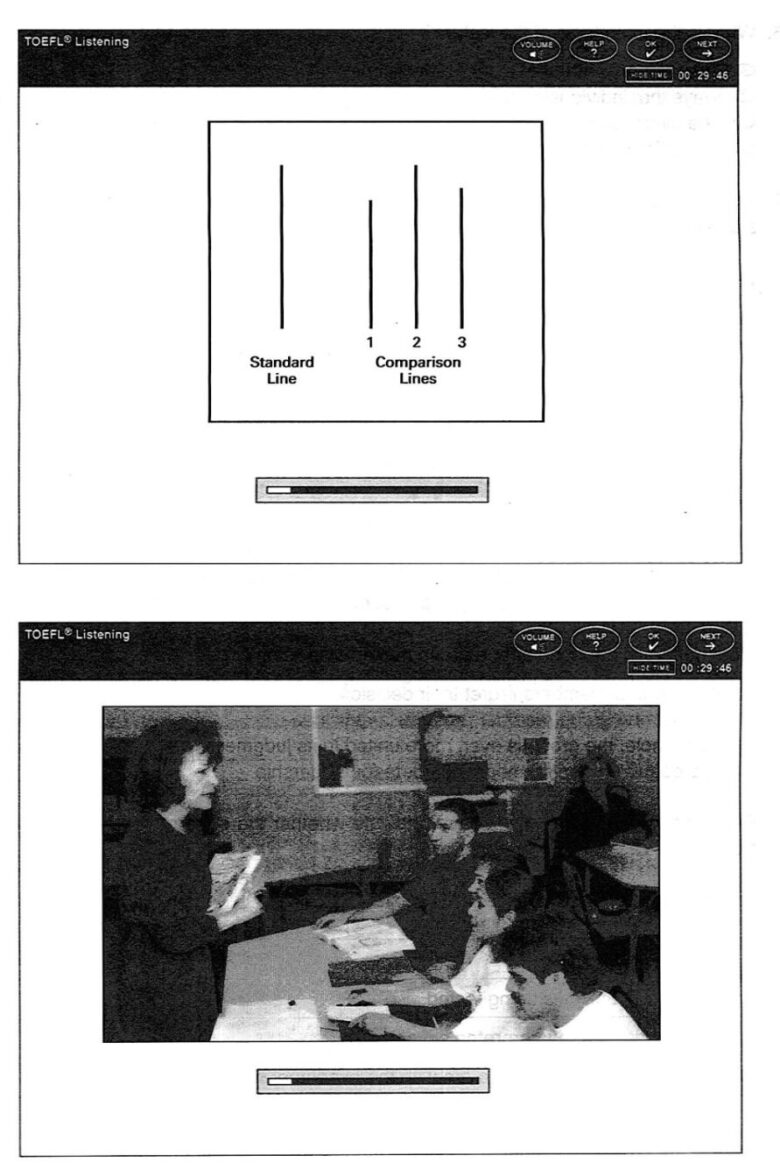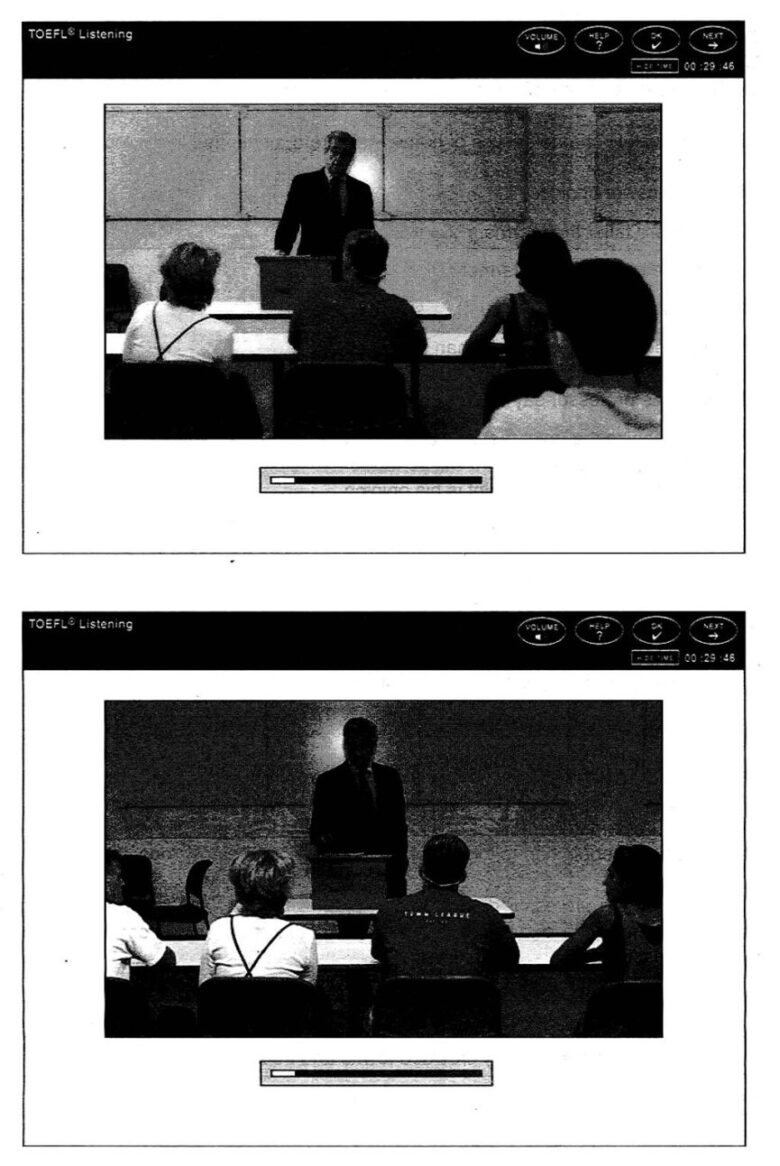TOEFL iBT Listening Practice Test 03 from Barron’s TOEFL iBT 13th Edition
The Listening section tests your ability to understand spoken English that is typical of interactions and academic speech on college campuses. During the test, you will listen to conversations and lectures and answer questions about them. There are two conversations and four lectures on the short format and three conversations and six lectures on the long format.
[soundcloud url=”https://api.soundcloud.com/tracks/277630989″ params=”auto_play=false&hide_related=false&show_comments=true&show_user=true&show_reposts=false&visual=true” width=”100%” height=”450″ iframe=”true” /]
Listening 1 “Students on Campus”
1. What are the students mainly discussing?
CD Group sessions in the Office of Career Development
CD The advantages of career counseling for the man
CD The woman’s internship in the Office of Career Development
CD How to find employment in the field of career counseling
2. What is the man’s problem?
CD He does not have time to see an advisor.
CD He does not have an internship yet.
CD He does not know which career to choose.
CD He does not have a job offer after graduation.
3. Why does the woman tell the man about her experience?
CD To demonstrate the benefits of going to the Office of Career Development
CD To encourage the man to talk with an advisor about an internship
CD To suggest that he change his major from math to library science
CD To give the man her opinion about his career decision
4. What is the woman’s attitude toward her internship?
CD She would rather go to graduate school.
CD She is looking forward to interning.
CD She thinks that it is a very positive experience.
CD She will be happy when she completes it.
5. What will the man probably do?
CD He will make an appointment with his academic advisor.
CD He will go to the Office of Career Development.
CD He will apply for a job at the library.
CD He will ask the woman to help him with his tests.
Listening 2 “Sociology Class”
6. What is the main topic of the lecture?
CD The problems inherent in group decisions
CD Ways that individuals become popular in groups
CD The influence of groups on individual behavior
CD The differences in social influence across cultures
7. According to the professor, what two results were reported in the Asch and Abrams studies?
Click on 2 answer choices.
[A] A larger group exerts significantly more pressure than a smaller group.
[B] Subjects conformed to group opinion in more than one-third of the trials.
[C] When the subject knows the group socially, there is greater pressure to conform.
[D] A majority opinion has as much influence as a unanimous opinion.
8. Why does the professor say this:
CD She regretted the result of the experiment.
CD She knew that the students would not like the information.
CD She needed to correct what she had said in a previous statement.
CD She neglected to mention important facts.
9. What generally happens after a group makes a decision?
CD Some group members regret their decision.
CD At least one group member presents a new idea.
CD As a whole, the group is even more united in its judgment.
CD The popular group members compete for leadership.
10. Based on information in the lecture, indicate whether the statements describe the Asch study.
For each sentence, click in the Yes or No column
Yes No
A Only one subject is being tested.
B The cards can be interpreted several ways.
C Some of the group collaborate with the experimenter.
11. What is the professor’s attitude about the studies on social influence?
CD She seems surprised by the results.
CD She appears to be very interested in them.
CD She needs more information about them.
CD She doubts that there is practical application.
Listening 3 “Art History Class”
12. What is the main topic of this lecture?
CD The process of fixing a photograph
CD The problem of exposure time
CE> The experiments by Louis Daguerre .
CD The history of early photography
13. According to the professor, what two limitations were noted in Daguerre’s process for developing and fixing latent images?
Click on 2 answer choices.
A. The photograph disappeared after a few minutes.
B. The images were very delicate and easily fell apart.
C. Multiple images could not be made from the plate.
D. The exposure time was still several hours long.
14. Why does the professor say this:
CD He is trying to generate interest in the topic.
CD He makes reference to a story in the textbook.
CD He is not sure whether the information is accurate.
CD He wants the students to use their imaginations.
15. What substance was first used to fix the images?
CD Copper powder
CD Table salt
CD Mercury vapor
CD Hot water
16. What can we assume about photographers in the 1800s?
CD Most of them had originally been painters before they became interested in photography.
CD Portrait photographers were in the highest demand since people wanted images of their families. .
CD There were only a few photographers who were willing to work in such a new profession.
CD Some of them must have experienced health problems as a result of their laboratory work.
17. In what order does the professor explain photographic principles?
CD From the least to the most important facts
CD In a chronological sequence of events
CD The order of the steps in the photographic process
CD The advantages before the disadvantages





